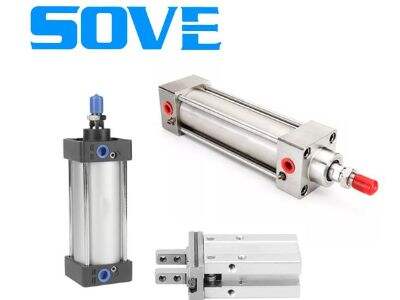Pneumatic actuators are key devices that allow things to move courtesy of air pressures. These actuators are used in many machines and devices we rely on daily. In this guide, we go over everything you need to know about pneumatic actuators: what they are, the different types, examples of where they’re used, their pros and cons, and how to select the best one for you.
What Are Pneumatic Actuators?
Pneumatic actuators are devices that use compressed air to create movement of a particular part. When air pressure acts on the actuator, the actuator moves a piston or a diaphragm, which moves something. This movement may open and close valves, move robotic arms, or drive other machines. The advantages of pneumatic actuators are such that they are of simple construction and reliable, and because they act promptly at a high precision.
Diversity of Pneumatic Actuators Here are a few types of Pneumatic actuators.
Multiple pneumatic actuators are provided in the art, and each actuator has its own structure and operation. Here are some common types:
Pneumatic Cylinders: They involve having a piston inside of a cylinder to produce linear motion. They are typically used in applications where straight line movement must be maintained.
Pneumatic Rotary Actuators These actuator utilize air pressure to generate rotating movement. They are employed to do things like swivel on valves or drive conveyor belts.
Pneumatic Grippers: These operate through air pressure dragging open and closed jaws capable of holding objects. They are commonly found in robots and factories.
Pneumatic Valves: These regulate the movement of air by opening and closing valves. They are key to controlling how air flows, and how machines function.
Where Can You Use Pneumatic Actuators?
" There are pneumatic actuators everywhere. Here are some examples:
Car Manufacturing:When used in car manufacturing, robotic arms can use Pneumatic actuator on the assemly line to build car parts.
Airplanes: Actuators that use pressurized air to control parts like wing flaps and landing gear.
Medical Devices: The technology is employed in products such as prosthetic limbs and hospital beds that move on their own.
Factories: Pneumatic actuators are used to power conveyor belts, robotic arms and other machines.
Advantages and Disadvantages of Pneumatic actuators
The characteristics of every single pneumatic actuator type have their own advantages and disadvantages. Here are some:
Good Points Pneumatic actuators are inexpensive, reliable, and simple. They are fast, and they are precise, which means they are good for a lot of work.
Bad Points: They may not be as strong as some other actuators, such as hydraulics. They also require a supply of compressed air, which could be an issue in some locations.
How to Choose the Pneumatic Actuator
When it comes to choosing a pneumatic actuator, you should consider what you need it for. Think about the movement you want, the weight you need to move and the amount of air pressure you have. You can guarantee your machines operate effectively by selecting the appropriate Air actuator.
In summary, pneumatic actuators are extremely critical in various industries and applications. You can make good decisions in choosing one for your purposes, by learning about the various kinds and how they are used. And of course, we are always available to help, in finding the right pneumatic actuator for your need.


